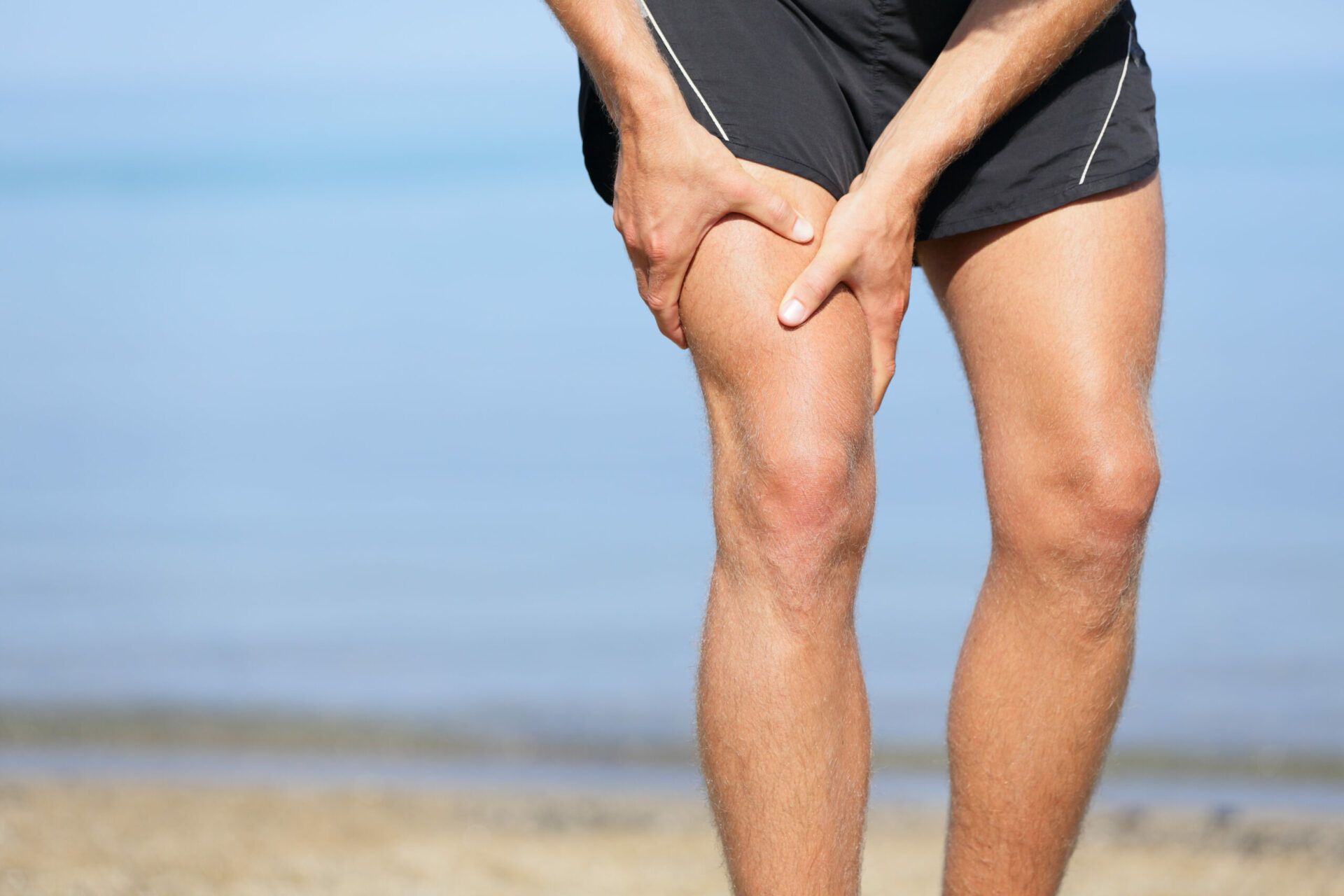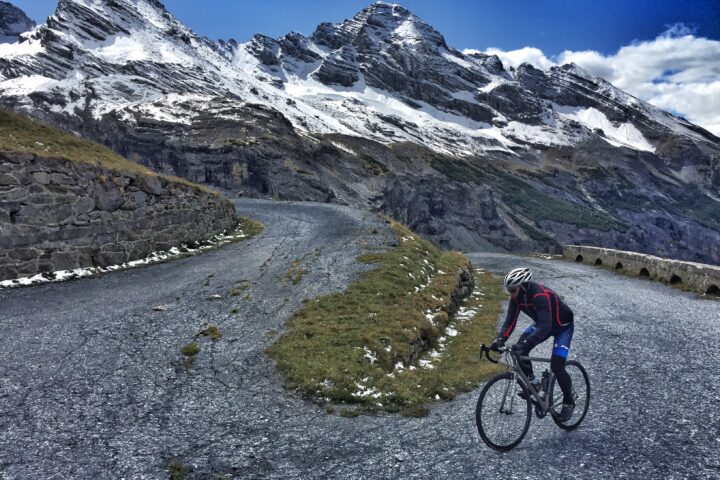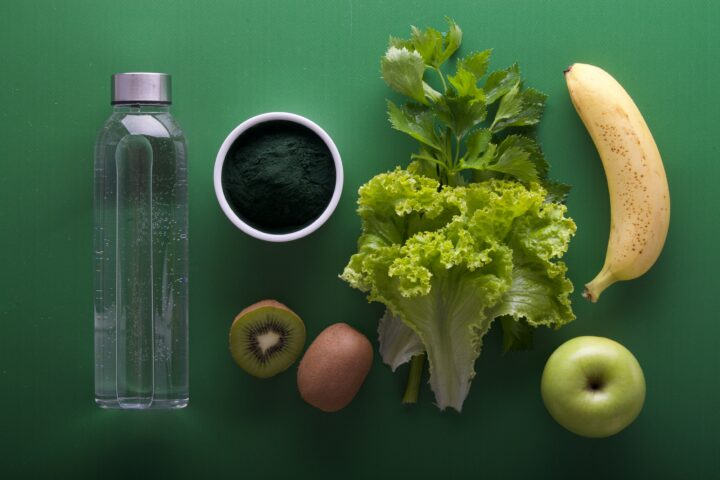If you race long enough, you’ll experience it: the searing pain of cramping.
For me, it first happened during a race in the Texas heat. I had made the winning move with three other riders and began to salivate over the $4,000 prize purse waiting at the finish line.
But that desire quickly gave way to an even greater need—to pull into the grass, tear off my shoes, and scream.
The notion that cramping is caused by dehydration or an electrolyte deficiency, and exacerbated by hot conditions, is commonplace. I’ve heard it hundreds of times from athletes: “I cramped near the end. Guess I wasn’t drinking enough electrolytes.”
If that were the case, however, professional riders, who spend long days under the relentless French sun every July, would be prone to cramping at higher rates. That isn’t the case.
“We rarely see cramps in professional cycling,” says Max Testa, a WorldTour team physician and sports medicine doctor at Intermountain Healthcare in Salt Lake City. “We see more dehydration. Especially in races like the Tour de France. Bottles are not always available. You have riders in the third or fourth group, sometimes they have to wait hours to get a bottle.”
This can lead to a huge electrolyte loss and sometimes upwards of a five percent loss of body weight, according to Testa. Yet they don’t cramp.
It’s not about the electrolytes
Before you grab that electrolyte mix, let’s take a closer look at what causes cramping.
Throughout his career, Testa has seen cramping correlate with many factors, including age, fitness, hot and humid environments, the degree to which an athlete sweats, spinal conditions, and predisposing conditions.
“Cramps are an involuntary contraction that is normally painful and also sudden,” Testa says. “Boom, they hit out of the blue. They also can involve a muscle group or just part of a muscle.”
Yet the question remains: What causes a cramp? The answer is not clear, but there are several theories. Instead of taking you through all of the theories—there are a number of great resources on the internet that will tell you all about Golgi tendons and interstitial space—I’d like to suggest an entirely new way of thinking about cramping.
That novel thinking starts with another question: What is fatigue? What is happening, physiologically, when you suddenly crack and the legs cease turning over?
It seems like a simple question. Yet, there are a plethora of possible answers: low blood sugar; muscle damage; dehydration, sodium/potassium balance. Scientists have been trying to answer this simple question and have come up with over 13 causes.
In the end, the mechanism of fatigue depends on several factors. Our bodies like to maintain balance, also called homeostasis. Human physiology is built to regulate body temperature, maintain a set blood sugar level, a set fluid level, blood pH, and so on.
Fatigue occurs when the body can’t maintain balance. Cramping is simply one manifestation of our bodies getting out of balance—a manifestation of fatigue.
“We know that muscle fatigue can trigger cramps,” Testa says. “The fatigue causes the muscle to become hyper-sensitive to the nerve signal. So, for example, under normal circumstances the muscle might receive a signal to contract at a certain percent, but when the muscle is tired the signal is amplified and contracts at, say, 100 percent. And that is causing this painful contraction.”
The altered neuromuscular control theory
Recent research suggests the above altered circuitry mechanism is the most common form of cramping. It happens when the muscles simply aren’t ready to take on the load placed on them by the effort of a race or hard training. The cramp is just the muscle saying, “I’m tired.”
This increasingly popular theory, called the “altered neuromuscular control theory,” was developed by Dr. Martin Schwellnus.
[For more, listen to Fast Talk, episode 26: Cramping Myths Debunked]
All muscles contain Golgi tendons, which cause muscles to relax, and proprioceptors, which cause muscles to contract. In order for muscle to function properly, there needs to be a signaling balance between these components.
According to the altered neuromuscular control theory, when a muscle becomes fatigued or damaged, Golgi tendons reduce their signaling, and contraction signals from proprioceptors dominate. In other words, a cramp occurs.
Dr. Schwellnus has written extensively about this and conducted some unique studies showing that electrolyte imbalance may very well have little to nothing to do with this process.
Other potential causes of cramping
Still, some researchers haven’t ruled out dehydration and electrolyte imbalance as a potential cause of cramping. After all, a loss of homeostasis by either mechanism has been shown to cause fatigue. As Testa points out, a five-pound loss of fluid can cause a 20 percent drop in VO2max.
The question is, which comes first: “It’s hard to say if dehydration is a direct cause of the cramp or if dehydration is causing fatigue of the muscle,” Testa says.
About five percent of the population are what are called salty sweaters. “These people can lose more than 1,000 milligrams of sodium with sweat each hour. Sport drinks contain between 200 and 700 milligrams, so they’re not even close to replenishing.”
While sodium can be an issue, especially for salty sweaters, the evidence suggests that magnesium, potassium, or calcium do not have anything to do with cramping.
“There are a few studies that show when they measure these electrolytes in the blood of the athletes that cramp versus athletes that don’t cramp, there isn’t much of a difference,” Testa says.
Finally, when hydration or electrolytes get extremely out of balance, they can lead to life-threatening issues such as hypernatremia. However, this form of cramping is much rarer and manifests differently. It tends to cause cramping throughout your muscles instead of localizing in a single muscle.
How to reduce your risk of cramping
Cramping is just one of the ways our bodies express fatigue. So, beating cramps comes down to finding particular ways to stay in homeostasis. Here are a few tricks to keep things in balance.
When a cramp hits
Your body is out of homeostasis. You have to let it recover. According to Testa: “The treatment is just slowing down, try to drink a sports drink with sodium or take a sodium tablet if you are a salty sweater. Then gradually go back into your pace or speed.”
Stretching the muscle and activating the opposite muscle (i.e. flexing your hamstrings if your quads are cramping) can help reduce the hypersensitivity.
Conditioning
This is the big one, and it really is that simple. Training builds our resistance to fatigue—all fatigue. This may be why pros rarely cramp. They are the fittest athletes out there.
“I see more cramping in semi-pro or serious recreational athletes—the ones who push themselves hard enough but don’t have the time to train like a pro,” Testa says. If you are cramping, especially in the early season, you may be hitting your body with too much intensity. Gradually build intensity and volume into your training and avoid any big jumps.
Ease in
Cramping is very common at the beginning of the season when our muscles aren’t ready for the stress of racing. A lot of cramping can be prevented by slowly easing into racing and high-intensity training at the beginning of the season.
Strengthen and balance muscles
One case study of an elite triathlete looked at why he was suffering from severe hamstring cramps. Electrolyte drinks weren’t working. The researchers discovered that his glutes were weak and were forcing him to rely on his hamstrings. Six weeks of glute exercises fixed the cramping and had him setting PRs.
If you suffer from cramps, a gym program is almost a pre-requisite. Focus on the entire chain, from your core to your calves.
[For more on strength training, listen to Fast Talk, episode 87: Preventing Injuries Through Strength and Conditioning, with Jess Elliott and episode 69: Functional Training, with Menachem Brodie]
Regular stretching
The hypersensitivity that leads to cramps is more common in tight muscles. A regular stretching routine is key. Testa recommends stopping periodically during your training rides to stretch for a few minutes.
[For more on the effects of stretching, listen to Fast Talk, episode 97: Are You Stretching Too Much? Analysis with Menachem Brodie and Payson McElveen]
Bike fit
An improper fit can force you to rely too much on a particular muscle group. This will cause the muscle to fatigue more rapidly. Before you put yourself in the most aerodynamically aggressive position possible, make sure you are setup to use your muscles optimally. Otherwise, the three percent gain in aerodynamics will be more than offset by the 10 percent loss from cramping.
For the salty sweaters
“Know your sweat rate,” Testa says. “This is something to monitor during training so you arrive at the race knowing how much sodium to take.”
If you finish a lot of rides with salt lines coating your jersey, you likely need to focus on getting enough sodium. Use a pre-hydration drink, especially on hot days, and carry a salt tablet in your jersey pocket. This can be hard to notice in races, but sodium related cramps have a “tell.” They are preceded by muscle twitches in your legs.
Check your meds
Testa, as an experienced physician, has seen this all too often. “There are some drugs that can increase the risk of cramp: some cold medications; some medications we use for psychiatric conditions; also some blood pressure medication, and medication to treat cholesterol.” Ask your doctor for further advice if you suffer from cramps and take any of these types of medication.
[For more on cramping, check out Fast Talk episode 142: Nutrition Myth-Busting on Macros, Carbs, Food Allergies, Cramping, and Hydration]




